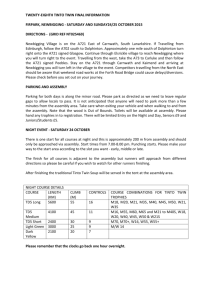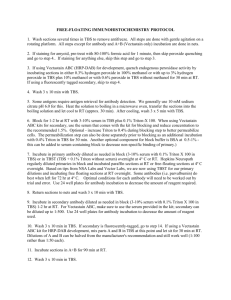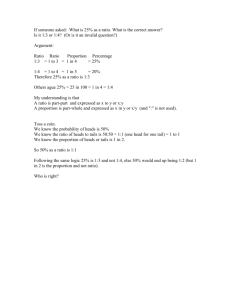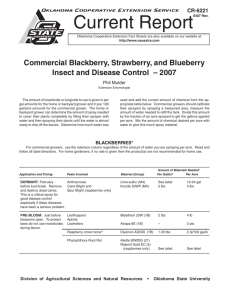Solving Proportions - Palm Beach State College
advertisement
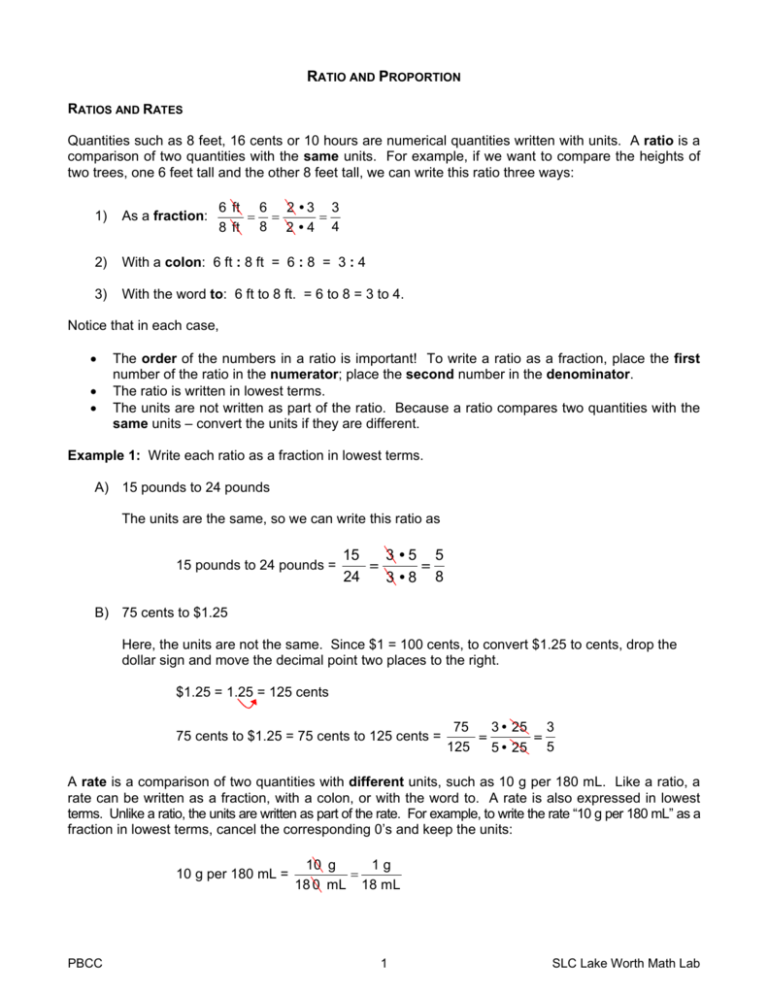
RATIO AND PROPORTION RATIOS AND RATES Quantities such as 8 feet, 16 cents or 10 hours are numerical quantities written with units. A ratio is a comparison of two quantities with the same units. For example, if we want to compare the heights of two trees, one 6 feet tall and the other 8 feet tall, we can write this ratio three ways: 6 ft 6 2 • 3 3 = = = 8 ft 8 2 • 4 4 1) As a fraction: 2) With a colon: 6 ft : 8 ft = 6 : 8 = 3 : 4 3) With the word to: 6 ft to 8 ft. = 6 to 8 = 3 to 4. Notice that in each case, • • • The order of the numbers in a ratio is important! To write a ratio as a fraction, place the first number of the ratio in the numerator; place the second number in the denominator. The ratio is written in lowest terms. The units are not written as part of the ratio. Because a ratio compares two quantities with the same units – convert the units if they are different. Example 1: Write each ratio as a fraction in lowest terms. A) 15 pounds to 24 pounds The units are the same, so we can write this ratio as 15 pounds to 24 pounds = 15 3 •5 5 = = 24 3 •8 8 B) 75 cents to $1.25 Here, the units are not the same. Since $1 = 100 cents, to convert $1.25 to cents, drop the dollar sign and move the decimal point two places to the right. $1.25 = 1.25 = 125 cents 75 cents to $1.25 = 75 cents to 125 cents = 75 3 • 25 3 = = 125 5 • 25 5 A rate is a comparison of two quantities with different units, such as 10 g per 180 mL. Like a ratio, a rate can be written as a fraction, with a colon, or with the word to. A rate is also expressed in lowest terms. Unlike a ratio, the units are written as part of the rate. For example, to write the rate “10 g per 180 mL” as a fraction in lowest terms, cancel the corresponding 0’s and keep the units: 10 g per 180 mL = PBCC 10 g 1g = 18 0 mL 18 mL 1 SLC Lake Worth Math Lab PROPORTIONS A proportion is a mathematical statement that two ratios or rates are equal. For example, whenever we write equivalent fractions, we create a proportion, such as the one shown below: 3 6 = 4 8 In a true proportion, the cross products are equal: 3 ( 8 ) = 24 4(6) = 24 3 6 = 4 8 Because the cross products are equal, we can solve a proportion when one of the numbers is unknown. Example 2: Solve 4 12 = 9 x To solve the proportion 1) cross multiply the ratios, 2) write an equation; and 3) solve for the variable. 4 9 = 12 ← Cross multiply the ratios x 4 • x = 9 • 12 4x = 108 4 x 108 = 4 4 x = 27 ← Write an equation ← Solve the equation for x 4 x Example 3: Solve 5 = 2 3 7 4 To solve the proportion, begin by finding the cross products: 4 5 = x 2 3 7 4 2 4 3 •x= • 7 5 4 2 3 x= 7 5 3 7 7 2 • x= • 2 7 5 2 21 x= 10 PBCC ← Cancel common factors ← Multiply both sides by the reciprocal of 2/7 2 SLC Lake Worth Math Lab SOLVING PROBLEMS WITH PROPORTIONS Proportions are often used to solve a variety of problems, such as estimating wildlife populations, scaling distances on a map, or calculating mixtures and dosages. Example 5: Solve the problem by writing a proportion: “The brewing directions on a bag of ground coffee recommend 2 tablespoons (tbs) of coffee for every 6 ounces (oz) of water. If the average-size coffee cup holds 6 ounces of coffee, how many tablespoons of coffee are needed to make eight 6-oz cups?” To write the proportion, 1) Identify the given ratio or rate and write it as a fraction. In the problem above, we are given the rate “2 tablespoons of coffee for every 6 ounces of water.” We can write this rate as 2 tbs to 6 oz = 2) 2 tbs 1 tbs = 6 oz 3 oz Assign a variable to represent the unknown quantity then write the second ratio or rate as a fraction. Let x = the number of tablespoons needed to make eight 6-oz cups. Given that each coffee cup holds 6 ounces, we need 48 ounces of water to make eight 6-oz cups of coffee.. This gives us the rate: x tbs to 48 oz = 3) x tbs 48 oz Write the proportion. Set the first ratio equal to the second. Note that, when we write a proportion, we are making a statement that the first ratio has the same value as the second. For this reason, the order in which we write a proportion is important! Always place like units across from each other, as shown: 1 tbs x tbs ← tbs across from tbs 3 oz 48 oz ← oz across from oz or = = 3 oz 48 oz ← oz across from oz 1 tbs x tbs ← tbs across from tbs Because the cross products are equal, inverting the ratios gives us an equivalent proportion. 4) Solve the proportion. To find the number of tablespoons, drop the units, cross multiply, and solve the resulting equation: 1 x = 3 48 3x = 48 3 x 48 = 3 3 x = 16 tbs Hint: When you solve a problem with a proportion, you may find it helpful to state the problem in the following way: 2 tbs is to 6 oz as x tbs is to 48 oz. PBCC 3 SLC Lake Worth Math Lab




